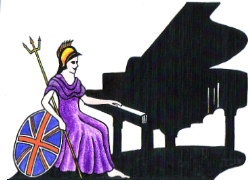Teachers, Accompanists and Piano Entertainers in the UK

UK Piano Page

217 Boxley Rd
Maidstone, Kent ME14 2BH
England
Sales of new and nearly new pianos from the
14 Elm Row
City of Edinburgh, Edinburgh EH7 4AA
Scotland
We have been Established for 30 years and have a
404 Marine Road East
Morecambe, Lancashire
England
We have a large range of acoustic and digital
878 Carmarthen Road
Swansea, Swansea SA5 8HR
Wales/Cymru
Discover the special nature of a visit to our
Unit 17 Chaucer Industrial Park, Watery Lane
Sevenoaks
Kemsing, Kent TN15 6PJ
England
Music Festival for performers and guests Our 10th
18-06-2022 01:30PM
The Morecambe Bay Piano Group was set up to extend
11-12-2021 02:00PM
The Morecambe Bay Piano Group was set up to extend
08-01-2022 02:00PM
The Morecambe Bay Piano Group was set up to extend
12-02-2022 02:00PM